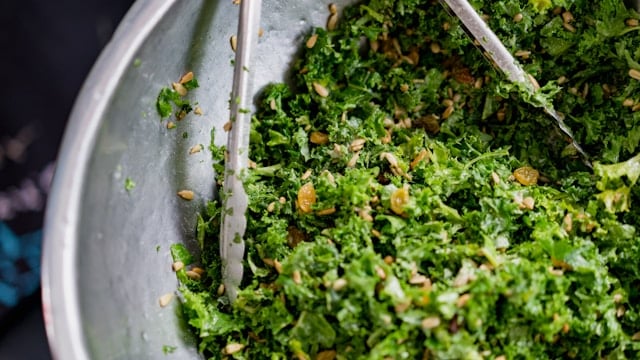When you think of a meal that oozes luxury and sophistication, one dish often comes to mind: Lobster Bisque. This classic French soup brings together the finest seafood in a creamy, rich, and flavorsome concoction, creating a dish that is both comforting and indulgent. But, how do you perfect the art of making a lobster bisque? How can you incorporate fresh shellfish like crab and shrimp or even a touch of caviar for an opulent twist? This article will explore all these facets, guiding you towards creating a lobster bisque that will impress your guests and satisfy your taste buds.
The Essential Components of a Lobster Bisque
When it comes to cooking a lobster bisque, understanding the key components is crucial. This soup is more than just combining ingredients, it’s about balancing the flavors to create a harmonious and delicious result.
A découvrir également : What’s the Key to a Perfectly Juicy Grilled Ribeye Steak?
Fresh Lobster
The star of your bisque, of course, is the lobster. One whole lobster will suffice for this recipe. Make sure it’s fresh and, if possible, alive before you start cooking.
The Stock
The heart of any good bisque lies within its stock. Made from the lobster’s shells, it is what gives the bisque its distinct, rich flavor. The addition of wine, sachet d’épices, and a variety of vegetables enhances the depth and complexity of the stock.
En parallèle : How to Bake a Gourmet Fig and Almond Tart with a Buttery Pastry Crust?
Roux
A mixture of butter and flour known as a roux is used to thicken the bisque, transforming it from a simple soup into something more substantial and luxurious.
Cream
To achieve the silky texture and lightness that is characteristic of a lobster bisque, add cream towards the end of cooking. This helps to balance the robust flavors of the stock and lobster meat.
Seasoning
Lobster bisque is typically seasoned with a blend of herbs and spices that complement the sweetness of the lobster. Common additions include bay leaf, thyme, and paprika.
Mastering the Process
Now that we’ve outlined the components, let’s delve into the process. Making lobster bisque involves several stages, but don’t be daunted. Each stage builds on the last, contributing to the overall flavor and texture of the dish.
First, you’ll need to prepare the lobster. This involves cooking it in a pot of boiling water for about 8 minutes, then removing the meat from the shell. The shells are then used to create the stock, which is simmered for around 45 minutes to extract maximum flavor.
At this point, the roux comes into play. Melt some butter in a separate pan, add flour, and cook until it forms a paste. This roux is then added to the stock, along with the lobster meat, and left to cook for a further 15 minutes.
Next, it’s time to add the cream. Pour it in slowly, stirring continuously to prevent it from curdling. Simmer the bisque for a few minutes more to allow the flavors to meld together, then season to taste.
Elevating Your Lobster Bisque
Once you’ve mastered the basics, you can start to experiment with additional ingredients and flavors. For an extra touch of elegance and complexity, consider adding other fresh shellfish.
Crab or Shrimp
Adding cooked crab or shrimp meat to your bisque can give it an interesting texture contrast and an extra layer of seafood flavor. It’s best to add this just before the cream, to ensure it is warmed through but not overcooked.
Caviar
For a truly opulent twist, a spoonful of caviar on top of each serving will not only look impressive but also add a burst of salty, seafood flavor that complements the creamy soup beautifully.
Serving Your Lobster Bisque
While the bisque itself is undoubtedly the star of the show, the way you present it can also make a big difference. Think about the bowls you use, the garnishes you choose, and even the bread you serve on the side.
Opt for shallow soup bowls to showcase your bisque. Garnish with a sprig of fresh dill or a sprinkle of paprika for a pop of color. A slice of crusty baguette or a warm, flaky croissant makes the perfect accompaniment, ideal for mopping up every last drop of your delicious bisque.
Mastering the art of the lobster bisque may take some practice, but with these tips and techniques, you’ll be well on your way to creating a soup that is rich, decadent, and full of flavor. So, roll up your sleeves, gather your ingredients, and prepare to impress with a homemade lobster bisque that rivals any high-end restaurant.
Amplifying the Flavor with Wine and Other Ingredients
Amplifying the flavor of your lobster bisque is all about adding depth and complexity while maintaining the star attraction – the lobster. The right ingredients can enhance the sweetness of the lobster meat and the richness of the lobster stock without overpowering them.
White Wine
White wine is a classic addition to lobster bisque, imparting a nuanced acidity that balances the richness of the soup. You’ll want to use a dry white wine, such as Chardonnay or Sauvignon Blanc, adding it to the stock to simmer with the lobster shells. The alcohol in the wine will cook off, leaving behind a sophisticated flavor profile that elevates the bisque to a new level.
Tomato Paste and Olive Oil
A small amount of tomato paste can add a hint of sweetness and tang to your bisque, complementing the sweet lobster meat. Add the tomato paste to your stock while it’s simmering for the best results. Similarly, a drizzle of olive oil can add a touch of richness and a slightly fruity note to your bisque.
From Maine Lobster to King Crab and King Salmon
While Maine lobster is the traditional choice for a lobster bisque, don’t be afraid to experiment with other types of seafood. King crab or Dungeness crab can add a different dimension of flavor and texture to your bisque. Even king salmon, with its robust flavor, can make a great addition to your bisque. Make sure to cook these additions separately and add them towards the end of the process to prevent overcooking.
Seasoning with Salt and Pepper
Seasoning with salt and pepper is essential, but it’s crucial to get the balance right. Too little seasoning and the flavor of your bisque may fall flat; too much and you risk overshadowing the delicate flavor of the lobster. Add seasoning gradually, tasting as you go, until you achieve the perfect balance.
Conclusion
Perfecting the art of lobster bisque involves not only mastering the basic components and process but also understanding how to enhance and elevate the flavors with carefully chosen ingredients. From the fresh lobster meat to the addition of white wine and tomato paste, every element contributes to the rich, indulgent experience that is lobster bisque.
Experimentation is key – whether it’s adding shrimp lobster, king crab, or even a dollop of red caviar, you can put your unique twist on this classic dish. And remember, the most critical ingredient is love and patience. Slow-cook your lobster stock, carefully extract the lobster meat, and attentively stir in that heavy cream. Finally, serve your bisque with pride, knowing you’ve created a dish that embodies luxury, sophistication, and a whole lot of deliciousness.
So, are you ready to start your lobster bisque journey? Grab your apron, roll up your sleeves, and get your lobster cooking. Whether you’re a seasoned chef or a budding home cook, you have the potential to perfect this delicacy. Here’s to creating a lobster bisque that leaves a lasting impression on your taste buds and your guests. Who knows? You may just create the next signature dish for your family and friends.











